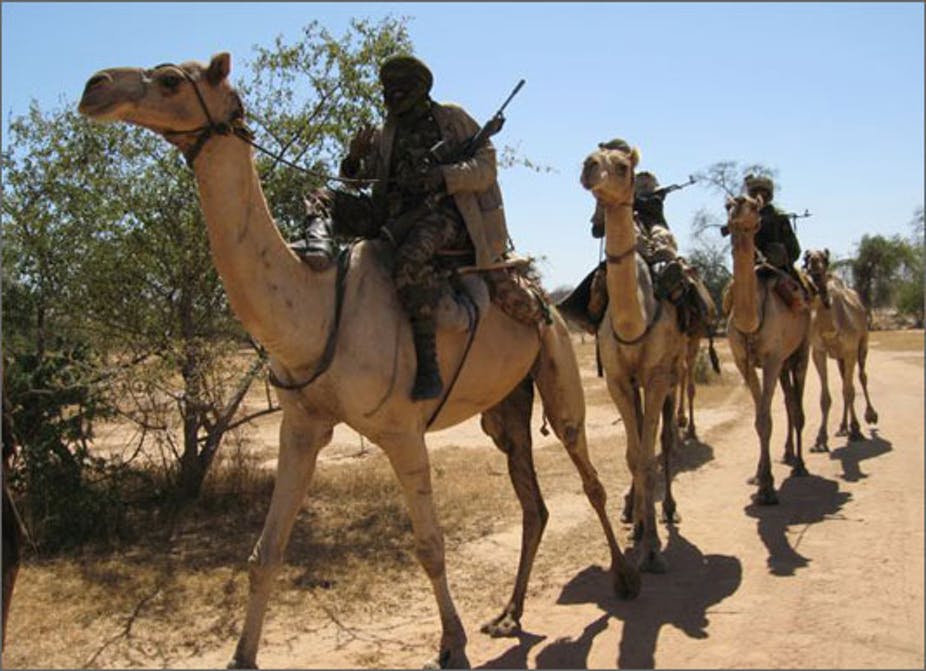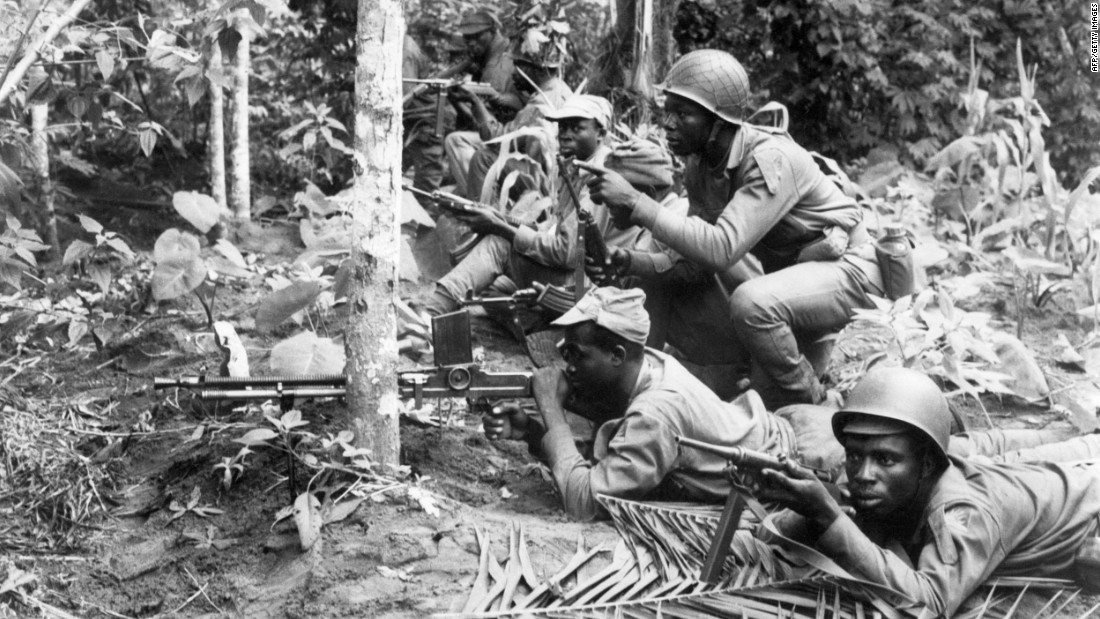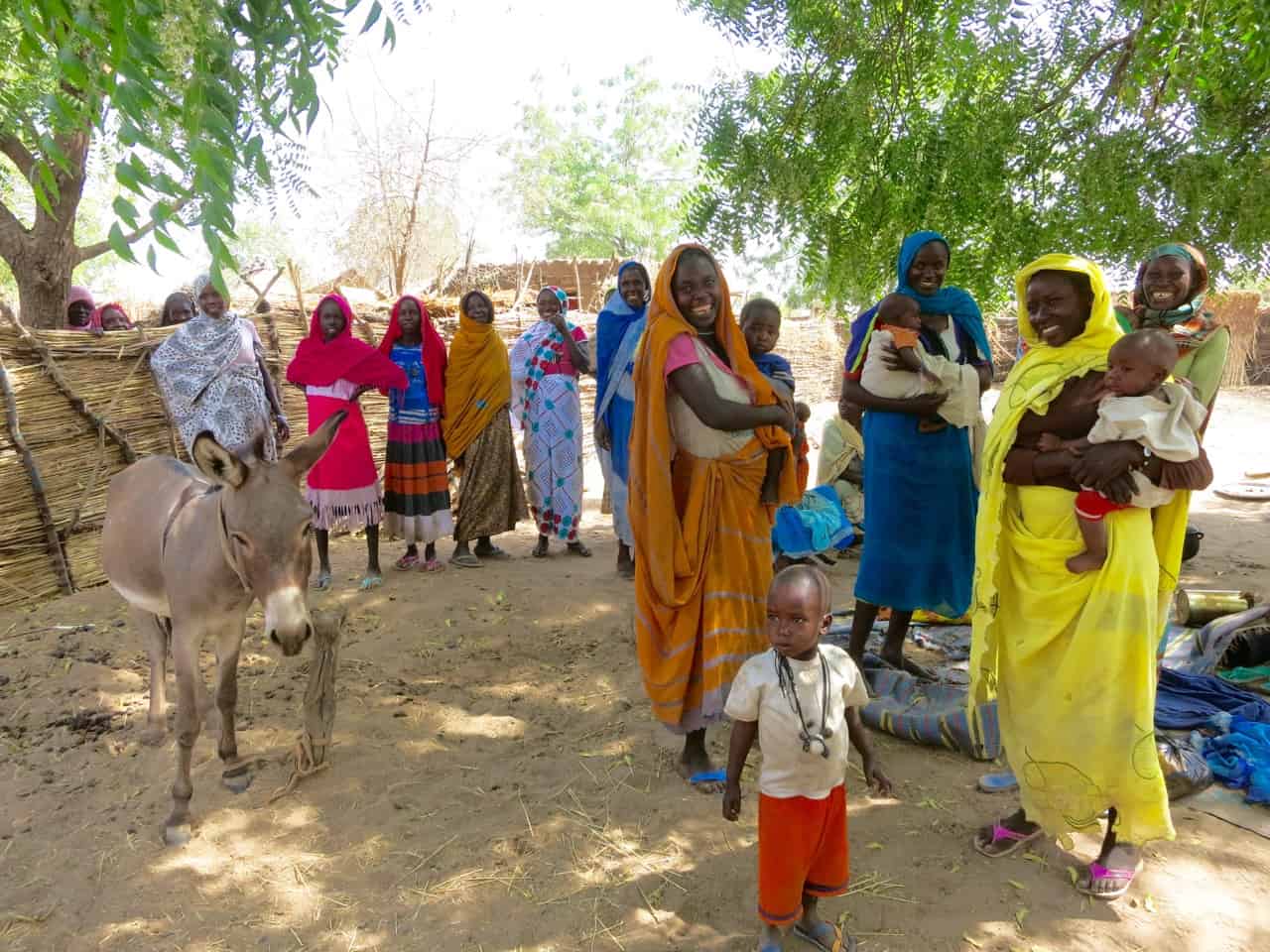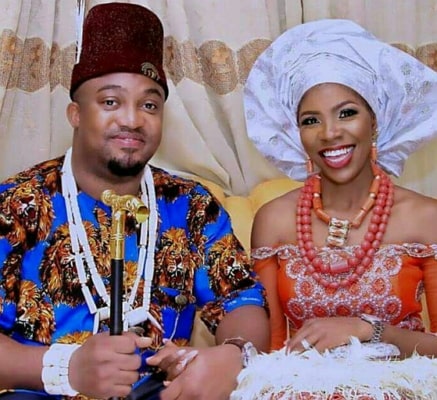Onye's World | Our World
“You'd be shocked by how much I don't have to make up.” -Nnedi Okorafor
Nnedi Okorafor once said in an interview with the New York Times, “You'd be shocked by how much I don't have to make up.” While Who Fears Death is identified as speculative fiction⁄science-fiction⁄fantasy novel, Okorafor borrows a lot of concepts and events to create her fantastical world. This being said, Onye's world is quite similar to our world, from the sexist themes to the weaponized rape, from the cultivation of slavery to the treatment of education. Who Fears Death might be a novel set in a futuristic post-apocalyptic world, but it eerily resembles our world more than we realize.
The Darfur Genocide & the Nigerian-Biafran War
ONYE'S WORLD
There are two central races to the book, the Okeke (link) and the Nuru (link). The Okeke are the indigenous peoples, and the Nuru are the Arabs. The racial tensions are only increased by the religion in the book. The Great Book forces the Okeke to become slaves and are to be eradicated. An antagonist in the book, called Daib, is a war leader and a religious leader. He uses his religion and his magic to his advantage in the war. Racial biases are a major player in the book as well. There are racial biases between the Okeke and the Nuru, but there is also a race called the Ewu (link). The Ewu are a mixed race between Okeke and Nuru, and they are usually produced through rape. They are assumed to be violent because of their origins.
OUR WORLD
The genocide in Darfur started in 2003 and is still ongoing. Most of this was racial and tribal tensions in that part of Sudan.  This was only made worse with the drought during the years of the conflict. The two sides of the genocide were the Arabs and the indigenous peoples, the Fur, Masalit and Zaghawa ethnic groups. The Arabs wanted to eradicate the indigenous peoples and were doing that with weaponized rape. Their leaders were becoming corrupt in the process and used their religion, which they warped, to their advantage.
This was only made worse with the drought during the years of the conflict. The two sides of the genocide were the Arabs and the indigenous peoples, the Fur, Masalit and Zaghawa ethnic groups. The Arabs wanted to eradicate the indigenous peoples and were doing that with weaponized rape. Their leaders were becoming corrupt in the process and used their religion, which they warped, to their advantage.
 The Nigerian-Biafran War lasted from 1967 to 1970. There were about three million deaths attributed to this war. This war was also filled with ethnic issues. To quote the Cambria Press, “In what can be called 'an invisible genocide,' the Igbo genocide was masked by the attempts by both federal Nigeria and major western nations to down play the evidence of the genocide perpetrated against the Igbo ethnic group as well as its deeper roots in the pre-civil war period.” The Igbo people are the tribe that Nnedi Okorafor was born from. Her parents fled to the United States during this war, and she used the war to influence Who Fears Death.
The Nigerian-Biafran War lasted from 1967 to 1970. There were about three million deaths attributed to this war. This war was also filled with ethnic issues. To quote the Cambria Press, “In what can be called 'an invisible genocide,' the Igbo genocide was masked by the attempts by both federal Nigeria and major western nations to down play the evidence of the genocide perpetrated against the Igbo ethnic group as well as its deeper roots in the pre-civil war period.” The Igbo people are the tribe that Nnedi Okorafor was born from. Her parents fled to the United States during this war, and she used the war to influence Who Fears Death.
Geography

ONYE'S WORLD
Within Who Fears Death, Onye lives in and travels through the desert a lot. Her home, Jwahir, in the East was desert, and she traveled a lot through the desert to get to Darfur. A few times throughout the novel, Onye learns about or visits what she called the Green. (link)
OUR WORLD
The land in the novel is based on the landscape of today's Sudan, which is mostly desert with some forest in the far south. More information on the geography of Sudan can be found at the following links:
Weaponized Rape
ONYE'S WORLD
Onye is an Ewu. An Ewu is a product of an Okeke and Nuru union. Most Ewu are born from rape; Nuru men raping Okeke women. There is an Ewu character however, Mwita, who is a product of love. These rapes are used to shame Okeke people and eradicate them as well. Rape victims in this book are treated like outcasts and are averted from. Women who are raped are avoided at all costs and their children, the Ewu, are seen as violent and are avoided as well. Weaponized rape is used in the book for the same reason as it was used in Darfur.
OUR WORLD
 During the genocide in Darfur, weaponized rape was often used against the women of the indigenous peoples. The Arabic soldiers would rape indigenous women to, usually get them pregnant. In an article written by Washington Post journalist Emily Wax, women were interviewed about their terrible trauma: “Interviews with two dozen women at camps, schools and health centers in two provincial capitals in Darfur yielded consistent reports that the Janjaweed were carrying out waves of attacks targeting African women. The victims and others said the rapes seemed to be a systematic campaign to humiliate the women, their husbands and fathers, and to weaken tribal ethnic lines.” The Janjaweed were soldiers in the war, and they were often armed and very dangerous. The main goal of these soldiers was to break apart tribal connections: “Another international aid worker, a high-ranking official, said: 'These rapes are built on tribal tensions and orchestrated to create a dynamic where the African tribal groups are destroyed. It's hard to believe that they tell them they want to make Arab babies, but it's true. It's systematic, and these cases are what made me believe that it is part of ethnic cleansing and that they are doing it in a massive way.'” Ethnic cleansing was the goal, as you can see. There are many organizations to help in Darfur, but there is an organization for female victims in Darfur called the Darfur Women's Action Group.
During the genocide in Darfur, weaponized rape was often used against the women of the indigenous peoples. The Arabic soldiers would rape indigenous women to, usually get them pregnant. In an article written by Washington Post journalist Emily Wax, women were interviewed about their terrible trauma: “Interviews with two dozen women at camps, schools and health centers in two provincial capitals in Darfur yielded consistent reports that the Janjaweed were carrying out waves of attacks targeting African women. The victims and others said the rapes seemed to be a systematic campaign to humiliate the women, their husbands and fathers, and to weaken tribal ethnic lines.” The Janjaweed were soldiers in the war, and they were often armed and very dangerous. The main goal of these soldiers was to break apart tribal connections: “Another international aid worker, a high-ranking official, said: 'These rapes are built on tribal tensions and orchestrated to create a dynamic where the African tribal groups are destroyed. It's hard to believe that they tell them they want to make Arab babies, but it's true. It's systematic, and these cases are what made me believe that it is part of ethnic cleansing and that they are doing it in a massive way.'” Ethnic cleansing was the goal, as you can see. There are many organizations to help in Darfur, but there is an organization for female victims in Darfur called the Darfur Women's Action Group.
Female Genital Mutilation (FGM)
ONYE'S WORLD
In Chapter 4 of the novel, Onye undergoes her Eleventh Year Rite with three other eleven year old girls—Luyu, Diti, and Binta. During this ceremony, the girls are each held down, and a scalpel infused with juju cuts and removes the clitoris. This ritual is used as a young girl's passage into adulthood, to becoming a woman.
OUR WORLD
In an interview, Okorafor explains that she first learned of female genital mutilation was when she was in her undergrad studies and that she is proud to be a voice to fight against female genital mutilation.
Additional readings on female genital mutilation in Sudan:
The Great Book/Religious Texts
ONYE'S WORLD
In Onye's world, the religion of the Okeke and Nuru is dictated by The Great Book. This religious text is filled with dictations and parables that tell them how to act and what to believe. Their main deity is Ani.
OUR WORLD
In Sudan, a primary deity (seen as a creator and in charge of lesser spirits) is
common in most Sudanese religions. Country Studies says, “Often the higher divinity is remote, and believers treat the other spirits as autonomous, orienting their rituals to these spirits rather than to the high god. Such spirits may be perceived as forces of nature or as manifestations of ancestors. Spirits may intervene in people's lives, either because individuals or groups have transgressed the norms of the society or because they have failed to pay adequate attention to the ritual that should be addressed to the spirits.”
Most world religions use a primary religious text like The Great Book. Christianity uses the Holy Bible, which has several different translations. Islam uses the Quran, composed of Allah's teachings told to the prophet Muhammad. Judaism uses the Torah, which is both an oral tradition and a written book with three parts: the Torah, Nevi'im, and Ketuvium. The Vedas from Hinduism are known as some of the earliest religious texts in existence.
Education
ONYE'S WORLD
In Onye's world, we see Onye and her friends attend school alongside male students. Additionally, Onye begins learning sorcery from Aro, who initially refused to take on a female student.
OUR WORLD
Although Onye is blessed with the opportunity to be educated in Who Fears Death, not all Sudanese people can relate today. South Sudanese youth have “the least accessible primary education system in the world with 22% of school-age (7-14) children attending school,” according to The Liliir Education Project. This is not aided by the fact that 93% of available teachers are untrained. Additionally, only 11% of girls are able to attend primary school, and only 5% complete their education through the 8th grade. It's no wonder that South Sudanese adults have a literacy level of 24%. Thankfully, UNICEF and the Global Partnership for Education have plans in place for improving Sudanese education, which you can read about to learn more.
Juju/Sorcery
ONYE'S WORLD
In Onye's world, juju is a very real aspect of everyday life. Several individuals are shown to have some control over basic juju skills. Beyond that, sorcery also exists, but it is not possible for everyone to study. Onye passes initiation, which allows her to study the Great Mystic Points.
OUR WORLD
Unfortunately, sorcery is not as accepted today as Okorafor writes. In 2011, a Sudanese man in Saudi Arabia was executed for witchcraft and sorcery. His crime? “Producing a spell designed to lead to the reconciliation of his client's divorced parents,” according to Sudan Tribune. In the same article, Toby Collins references Ali Hussain Sibat, initially sentenced to death in 2009 for claiming to predict the future on his talk show. Sibat's charges were dropped in 2010, then reinstated, and then he was given temporary reprieve. The article notes that “sorcery isn't actually defined as a crime in Saudi Arabian law, but it's been used to punish people for the peaceful expression of human rights such as the freedom of thought, belief, conscience and expression.” Thankfully, there are groups that are attempting to change this practice. In 2011, Amnesty International called for a halt in executions in Saudi Arabia. After a Saudi Arabian woman's execution (with unclear evidence of her crime), Amnesty International's interim director, Philip Luther, released a statement saying “the charge of sorcery has often been used in Saudi Arabia to punish people, generally after unfair trials, for exercising their right to freedom of speech or religion.”
Slavery
ONYE'S WORLD
The Okeke race within the novel are mistreated and often times abused, raped, and enslaved by the Nuru race. The Okeke are supposed to resemble Black Africans while the Nuru are described similarly as Arab Africans.
OUR WORLD
This can be directly related to the most recent wave of slavery to take place in Sudan, where Northern Sundanese Arabs were capturing and selling Black Sundanese Africans. More information on the topic can be found by viewing the following links:
Marriage
ONYE'S WORLD
 Marriage plays a big part in the book because of the FGM. When the Eleventh Rite takes place, juju is placed on the wound, so if the girls become sexual before marriage, they feel pain. This pain goes away when they are married.
Marriage plays a big part in the book because of the FGM. When the Eleventh Rite takes place, juju is placed on the wound, so if the girls become sexual before marriage, they feel pain. This pain goes away when they are married.
OUR WORLD
In the Igbo culture, marriage is a very important part of life. Marriage is what connects villages together. Women move from the village where they were born to the village of their husband. Wives are the connecting point between villages.
This page compiled by Johanna Comish, TillieAnn Boliard, & Savanna Prasun
Return to top
 This was only made worse with the drought during the years of the conflict. The two sides of the genocide were the Arabs and the indigenous peoples, the Fur, Masalit and Zaghawa ethnic groups. The Arabs wanted to eradicate the indigenous peoples and were doing that with weaponized rape. Their leaders were becoming corrupt in the process and used their religion, which they warped, to their advantage.
This was only made worse with the drought during the years of the conflict. The two sides of the genocide were the Arabs and the indigenous peoples, the Fur, Masalit and Zaghawa ethnic groups. The Arabs wanted to eradicate the indigenous peoples and were doing that with weaponized rape. Their leaders were becoming corrupt in the process and used their religion, which they warped, to their advantage. The Nigerian-Biafran War lasted from 1967 to 1970. There were about three million deaths attributed to this war. This war was also filled with ethnic issues. To quote the Cambria Press, “In what can be called 'an invisible genocide,' the Igbo genocide was masked by the attempts by both federal Nigeria and major western nations to down play the evidence of the genocide perpetrated against the Igbo ethnic group as well as its deeper roots in the pre-civil war period.” The Igbo people are the tribe that Nnedi Okorafor was born from. Her parents fled to the United States during this war, and she used the war to influence Who Fears Death.
The Nigerian-Biafran War lasted from 1967 to 1970. There were about three million deaths attributed to this war. This war was also filled with ethnic issues. To quote the Cambria Press, “In what can be called 'an invisible genocide,' the Igbo genocide was masked by the attempts by both federal Nigeria and major western nations to down play the evidence of the genocide perpetrated against the Igbo ethnic group as well as its deeper roots in the pre-civil war period.” The Igbo people are the tribe that Nnedi Okorafor was born from. Her parents fled to the United States during this war, and she used the war to influence Who Fears Death. 
 During the genocide in Darfur, weaponized rape was often used against the women of the indigenous peoples. The Arabic soldiers would rape indigenous women to, usually get them pregnant. In an
During the genocide in Darfur, weaponized rape was often used against the women of the indigenous peoples. The Arabic soldiers would rape indigenous women to, usually get them pregnant. In an 
 Marriage plays a big part in the book because of the FGM. When the Eleventh Rite takes place, juju is placed on the wound, so if the girls become sexual before marriage, they feel pain. This pain goes away when they are married.
Marriage plays a big part in the book because of the FGM. When the Eleventh Rite takes place, juju is placed on the wound, so if the girls become sexual before marriage, they feel pain. This pain goes away when they are married.